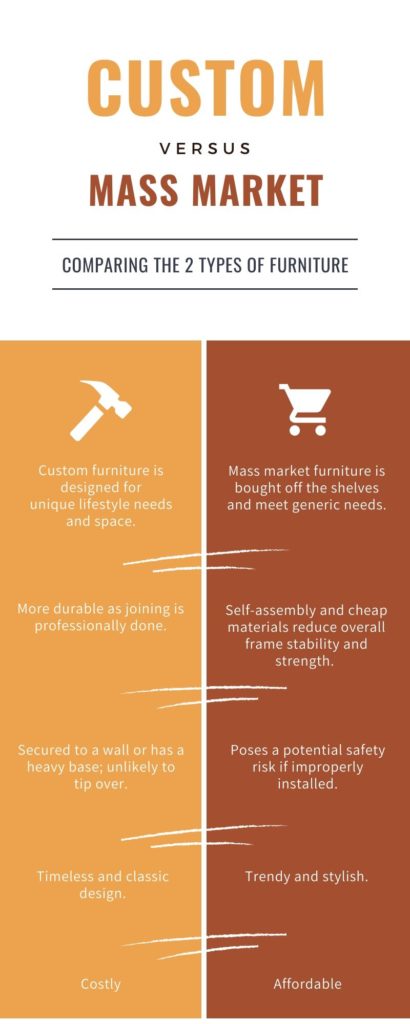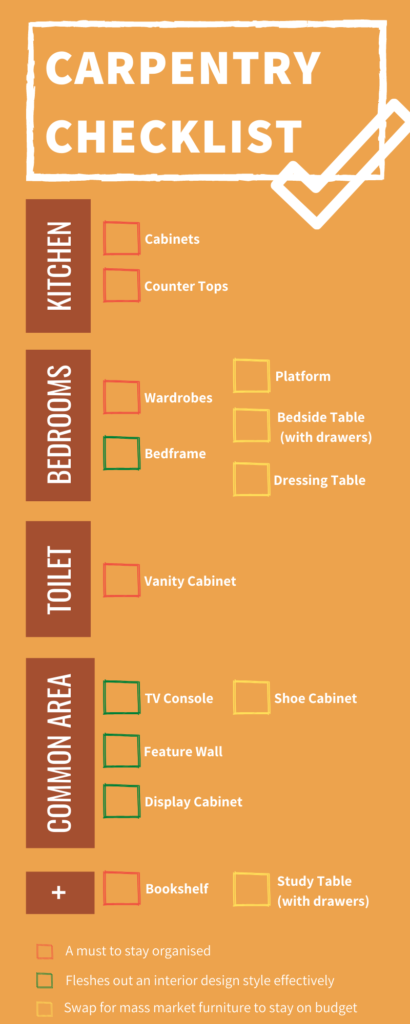The key differences between mass market and custom-made furniture are functionality, longevity and price.
Custom carpentry is designed to suit unique lifestyle needs and space. Designs are tailored to maximize a designated space, improve layouts for collectibles, and personalize a desired interior design style. However, customization will cost you a pretty penny because of the hours of craftsmanship needed to complete the job perfectly.
Contrast this to affordable off-the-shelf furniture which have been mass produced for generic needs. These may not be the best solution for individuals with specific storage needs or non-standard spaces (e.g. curved walls, high ceilings).
In terms of make, mass manufactured flat-pack furniture is undeniably less durable. Designed for self-assembly, it is difficult to ensure that the joining is done securely. Even if you count yourself a master DIY-craftsman, the low-cost chipboard is prone to warping and chipping which compromise the strength of the frame and thus ability to bear a load. Under extreme heat, load and exposure to moisture the vulnerabilities are exacerbated. Moreover, the furniture’s alignment tends to go out shape after it has been dismantled then put back together again.
Another overlooked factor is safety. Unlike custom-made furniture, free standing furniture isn’t bolted to the wall. Any imbalance in weight distribution causes the furniture to tip over.
Make no mistake, these tip overs are no small matter. In North America, furniture giant IKEA paid USD 50 million in settlement fees for tip-over deaths of three children. A total of six children were either crushed or suffocated to death under the load of opened dressers in 2016 alone. Although the company’s representative reassured the public that anchoring dressers to the wall could have prevented the accidents, the lightweight chipboard material used for the frame does not inspire confidence for durability and sturdiness.
As depressing as these realities might be, furnishing a home with affordable mass market furniture is totally ok if you’re not fussy over the make and you’re on a tight budget. Mass market furniture might be up your alley if you love to update your space with trendy pieces. Always remember to follow installation instructions and take note of the safety warning







